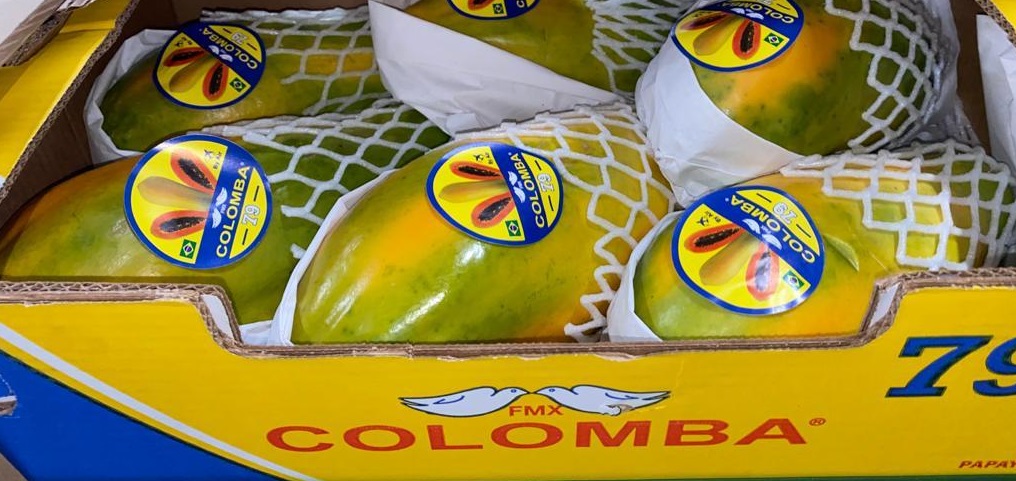A Tropical Superfruit with Health Benefits and Culinary Versatility.


A Tropical Superfruit with Health Benefits and Culinary Versatility.


Papaya, known scientifically as Carica papaya, is a tropical fruit that has captivated taste buds and health enthusiasts alike. With its vibrant orange color, sweet flavor, and soft, buttery texture, papaya has become a favorite in many parts of the world. Beyond its delightful taste, this fruit is lauded for its rich nutritional profile and myriad health benefits. In this article, we explore the origins of papaya, its nutritional composition, health benefits, culinary uses, and cultural significance.
Origins and Cultivation
Papaya is believed to have originated in southern Mexico and Central America, with ancient civilizations like the Mayans and Aztecs cultivating it for its fruit and medicinal properties. The fruit quickly spread to other tropical regions, including the Caribbean, South America, and Asia, due to its adaptability to warm climates.
Papaya grows on a tree-like plant, which can reach heights of 10-12 meters. The fruit is typically large, oval-shaped, and ranges in color from green (when unripe) to orange or yellow (when ripe). The plant thrives in tropical and subtropical climates, requiring plenty of sunlight and well-drained soil.
Nutritional Profile
Papaya is a powerhouse of essential vitamins, minerals, and antioxidants. Here's a look at some of the key nutrients found in papaya:
- Vitamin C: Papaya is an excellent source of vitamin C, providing more than 200% of the daily recommended intake in a single serving. This antioxidant is essential for immune function, skin health, and wound healing.
- Vitamin A: Papaya contains beta-carotene, which the body converts to vitamin A, important for vision and immune health.
- Folate: This B-vitamin is crucial for cell growth and development, especially during pregnancy.
- Potassium: An essential mineral that helps regulate blood pressure and supports heart health.
- Dietary Fiber: Papaya contains a good amount of fiber, which aids digestion and supports heart health.
Additionally, papaya contains papain, a proteolytic enzyme that aids in digestion by breaking down proteins. This enzyme has been used in traditional medicine for centuries to treat digestive disorders and inflammation.
Health Benefits
The health benefits of papaya are extensive, making it a valuable addition to a balanced diet. Here are some of the key health benefits associated with papaya:
1. Supports Digestive Health
Papaya's high fiber content and the presence of papain contribute to improved digestion. The enzyme helps break down proteins, aiding in the absorption of nutrients and reducing bloating and indigestion.
2. Boosts Immunity
The high vitamin C content in papaya helps strengthen the immune system, allowing the body to fend off infections and illnesses more effectively. It also contains antioxidants that combat free radicals, reducing oxidative stress.
3. Promotes Heart Health
Papaya's fiber, potassium, and antioxidant content all play a role in supporting heart health. Consuming papaya may help lower blood pressure and reduce the risk of heart disease.
4. Improves Skin Health
The antioxidants and vitamins in papaya can promote healthy skin. Vitamin C helps stimulate collagen production, while beta-carotene and other antioxidants may protect against skin damage and premature aging.
5. Reduces Inflammation
Papain and other compounds in papaya have anti-inflammatory properties, which may help reduce swelling and pain in conditions like arthritis.
Culinary Uses
Papaya's sweet flavor and soft texture make it a versatile ingredient in a variety of dishes. Here are some popular culinary uses for papaya:
1. Fresh Fruit
One of the simplest ways to enjoy papaya is to eat it fresh. Simply cut the fruit in half, remove the seeds, and scoop out the flesh. It can be eaten on its own, added to fruit salads, or blended into smoothies.
2. Papaya Salads
Green (unripe) papaya is commonly used in savory salads, such as the famous Thai dish Som Tam. The crisp texture of green papaya pairs well with spicy, tangy, and savory flavors.
3. Papaya Salsa
Papaya can be used to make a refreshing salsa. Combine diced papaya with onions, peppers, lime juice, and cilantro for a vibrant topping for grilled meats or fish.
4. Papaya Desserts
Ripe papaya can be used in desserts like sorbets, pies, or fruit tarts. Its natural sweetness makes it a suitable base for various sweet dishes.
5. Papaya Juice and Smoothies
Papaya can be juiced or blended into smoothies, providing a refreshing and nutritious beverage. Combining papaya with other fruits like mango and banana creates a tropical flavor profile.
Cultural Significance
Papaya holds cultural significance in many regions where it is cultivated. In tropical and subtropical countries, papaya is a staple in local cuisine and is often consumed as a fresh fruit or used in traditional dishes. It is also valued for its medicinal properties in traditional practices, where papain is used to treat digestive disorders and other ailments.
In India, papaya is considered auspicious in some cultures and is used in religious ceremonies. In Central and South America, papaya has a long history of use in traditional medicine and is often included in folk remedies.
Papaya is a vibrant and nutritious tropical fruit with a rich history and diverse culinary applications. Its high vitamin C content, along with other essential nutrients and the enzyme papain, provides numerous health benefits. Whether eaten fresh, blended into smoothies, or incorporated into savory dishes, papaya offers a delightful taste and versatility. Its cultural significance and traditional uses further enhance its appeal. As you explore new foods and flavors, consider adding papaya to your diet for a burst of tropical goodness and a boost in nutrition.